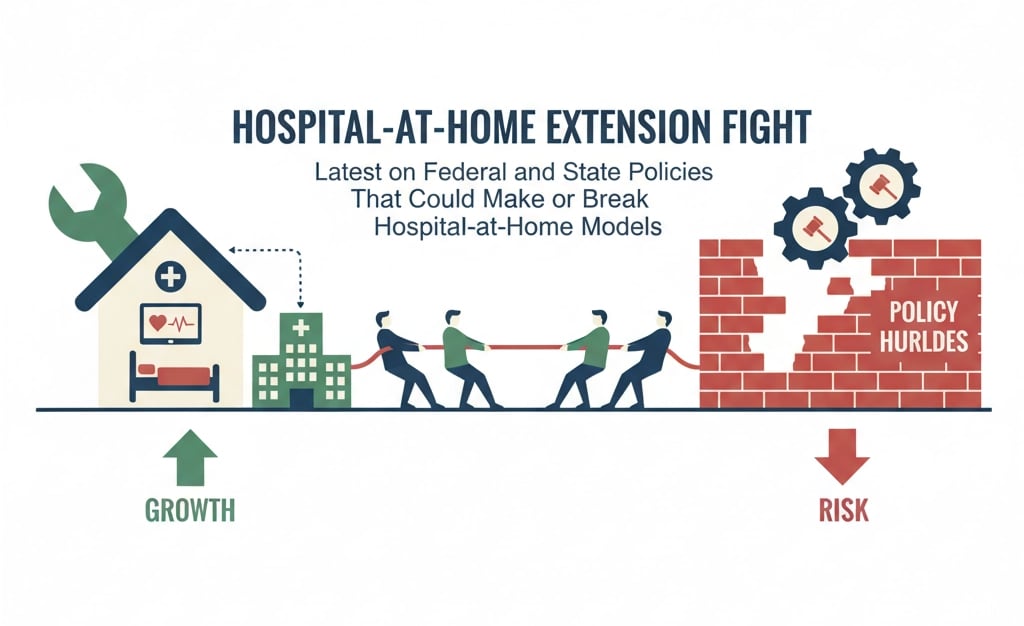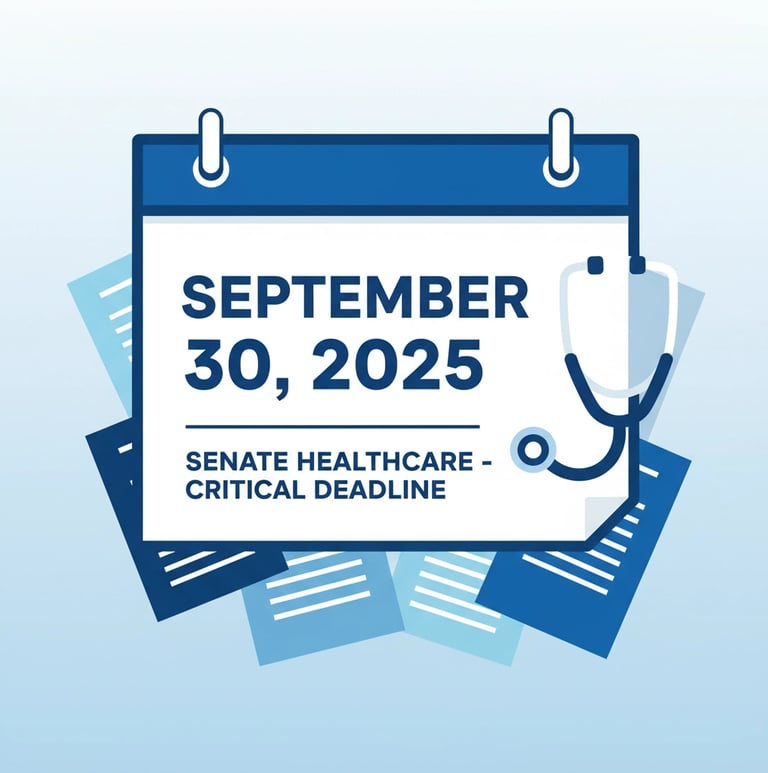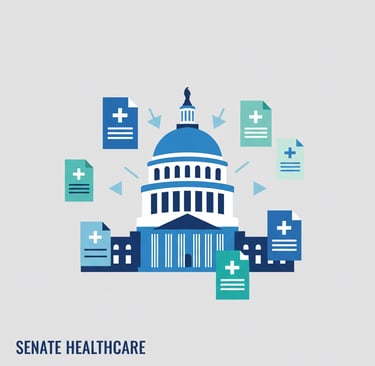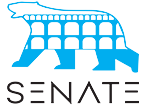Hospital-at-Home Extension Fight: Latest on Federal and State Policies That Could Make or Break Hospital-at-Home Models
Analysis of the Hospital-at-Home waiver expiration on September 30, 2025, examining the current legislative stalemate, immediate impacts on healthcare systems, and strategic implications for home health agencies and hospital partnerships.
10/20/20255 min read


The Hospital-at-Home program has reached a critical crossroads. After the federal waiver expired on September 30, 2025, healthcare systems nationwide are grappling with the immediate fallout of lost Medicare reimbursement and uncertain regulatory guidance (see coverage from HealthJournalism.org). For home health and hospice agencies considering strategic partnerships or expansion opportunities, understanding this policy landscape is crucial for informed decision-making.
The September 30 Cliff: What Actually Happened
When the clock struck midnight on September 30, 2025, the Acute Hospital Care at Home initiative officially ended, despite serving as a lifeline for acute care delivery during and after the pandemic. The Centers for Medicare & Medicaid Services (CMS) had issued clear guidance months prior (Safety Net Alliance federal policy update): all hospitals with active waivers needed to discharge or transfer their home-based inpatients back to traditional facilities by the deadline.
The numbers tell the story of disruption. As of July 2025, CMS had approved 419 hospitals across 142 health systems in 39 states to participate in the program. While not all approved facilities were actively operating Hospital-at-Home services, those that were suddenly found themselves unable to bill Fee-for-Service Medicare or Medicaid for these specialized services.


This policy cliff creates immediate financial strain. Hospitals choosing to continue providing hospital-level care at home must now absorb the full cost, though they can still bill private insurers, Managed Care Medicaid plans, and self-pay patients. Critically, if Congress eventually reinstates the waiver, hospitals cannot retroactively bill for services provided during this gap period.
Congressional Stalemate and Legislative Solutions
The primary vehicle for salvation sits in congressional committee rooms: the Hospital Inpatient Services Modernization Act (H.R. 4313/S.2237). This bipartisan legislation would extend the Hospital-at-Home waiver for five years through 2030, providing the stability healthcare systems desperately need.
The bill's sponsors represent a diverse coalition. In the House, Representatives Vern Buchanan (R-Fla.), Lloyd Smucker (R-Pa.), and Dwight Evans (D-Pa.) lead the charge, while Senators Tim Scott (R-S.C.) and Raphael Warnock (D-Ga.) champion the cause in the upper chamber. Despite this bipartisan support, the legislation remains stalled.
Congress has a track record of last-minute extensions for this program. Previous extensions in 2022, 2024, and March 2025 all came through emergency funding measures, with the most recent providing just six months of relief. The Congressional Budget Office scored these extensions as budget-neutral, indicating they don't increase federal spending. This should theoretically make passage easier, yet political gridlock persists.


Temporary Relief and Regulatory Gray Areas
While CMS guidance doesn't explicitly outline a formal non-enforcement policy, industry sources indicate the agency intends to exercise enforcement discretion for approximately 60 days (reporting here). This unofficial grace period applies primarily to patients who were already receiving care before September 30, preventing hospitals from immediate regulatory citations.
However, this relief comes with limitations. CMS has stopped accepting new waiver applications entirely (AHA fact sheet), and hospitals must now address previously waived Physical Environment requirements. Those found out of compliance must submit formal plans of correction, typically within 60 days of identification.
For healthcare executives, this regulatory uncertainty creates operational challenges. Strategic planning becomes nearly impossible when fundamental program parameters remain in flux.
Impact on Healthcare Systems and Strategic Planning
The policy uncertainty extends far beyond individual hospitals. Health systems that invested millions in Hospital-at-Home infrastructure now face difficult decisions about program continuation (see policy priorities from Moving Health Home). Some may choose to operate at a loss, viewing the service as strategically important for patient satisfaction and market positioning. Others may suspend operations entirely, dismantling programs that took years to develop.
For home health agencies, this creates both challenges and opportunities. Hospital systems may seek partnerships with established home care providers to maintain some level of home-based services, even without the specialized Hospital-at-Home reimbursement model. These partnerships could involve:
Skilled nursing services for post-acute transitions
Remote patient monitoring capabilities
Care coordination for complex patients
Technology platforms for virtual care delivery
Understanding these partnership opportunities becomes crucial as the healthcare landscape shifts.


State Policy Implications and Medicaid Considerations
The federal policy vacuum creates particular challenges for state Medicaid programs. Many states had been considering coverage expansion for hospital-at-home services but hesitated due to uncertainty about federal program continuation. A five-year federal extension would provide the stability needed for states to develop comprehensive Medicaid policies supporting these innovative care models.
Without federal leadership, states face the daunting prospect of creating independent regulatory frameworks. This path requires navigating complex healthcare regulations without the benefit of federal waivers that simplified implementation during the pandemic era.
The American Hospital Association emphasizes that longer-term federal authorization would not only provide additional time for data collection on quality improvement and cost savings but would also alleviate state concerns about policy development investments (AHA fact sheet).
Financial Realities and Market Dynamics
The immediate financial impact varies significantly across healthcare systems. Large, well-capitalized health networks may weather the storm by continuing programs through private pay arrangements. Smaller hospitals and rural systems face more severe constraints, potentially forcing program suspension.
This creates a two-tiered market where Hospital-at-Home services become increasingly concentrated among major health systems with diverse payer mixes. For home health agencies considering strategic partnerships or acquisitions, understanding these market dynamics becomes essential for positioning and valuation discussions.
The program's success metrics support continued investment despite regulatory uncertainty. Medium-acuity patients receiving hospital-level care at home typically experience better outcomes, reduced readmission rates, and higher satisfaction scores compared to traditional inpatient stays.
Looking Forward: Policy Scenarios and Strategic Responses
Healthcare leaders must prepare for multiple scenarios (Hospital at Home Users Group policy event). The most optimistic outcome involves congressional action before year-end, potentially through attachment to omnibus funding legislation. A more likely scenario involves continued delays, pushing any resolution into 2026.
Healthcare systems should consider several strategic responses:
Immediate actions:
Document all program costs and outcomes data for future policy discussions
Maintain core infrastructure and staff competencies where financially feasible
Explore private-pay and alternative reimbursement models
Strengthen partnerships with home health providers for transitional care
Medium-term planning:
Develop contingency plans for various policy scenarios
Assess market positioning for when federal reimbursement returns
Consider geographic expansion strategies for states with supportive policies
The current regulatory uncertainty mirrors broader challenges facing healthcare providers, making strategic advisory services increasingly valuable for navigating complex policy landscapes.
The Hospital-at-Home extension fight represents more than a single program's future. It reflects broader tensions between healthcare innovation and fiscal responsibility, between patient-centered care and traditional delivery models. As this policy battle continues, healthcare leaders must balance immediate operational needs with long-term strategic positioning, preparing for whatever regulatory landscape emerges from the congressional deliberations ahead.
Unlock Your 30-Minute Agency Succession Review
Maybe you're ready to expand your reach, or perhaps it's time to consider your legacy and the future of your business. Either way, it all begins with a conversation. Schedule a confidential, no-obligation call to explore what the future might hold for you and your business.
Complete the form, and we'll reach out for a chat...


© 2025 SENATE HEALTHCARE LLC.
ALL RIGHTS RESERVED


